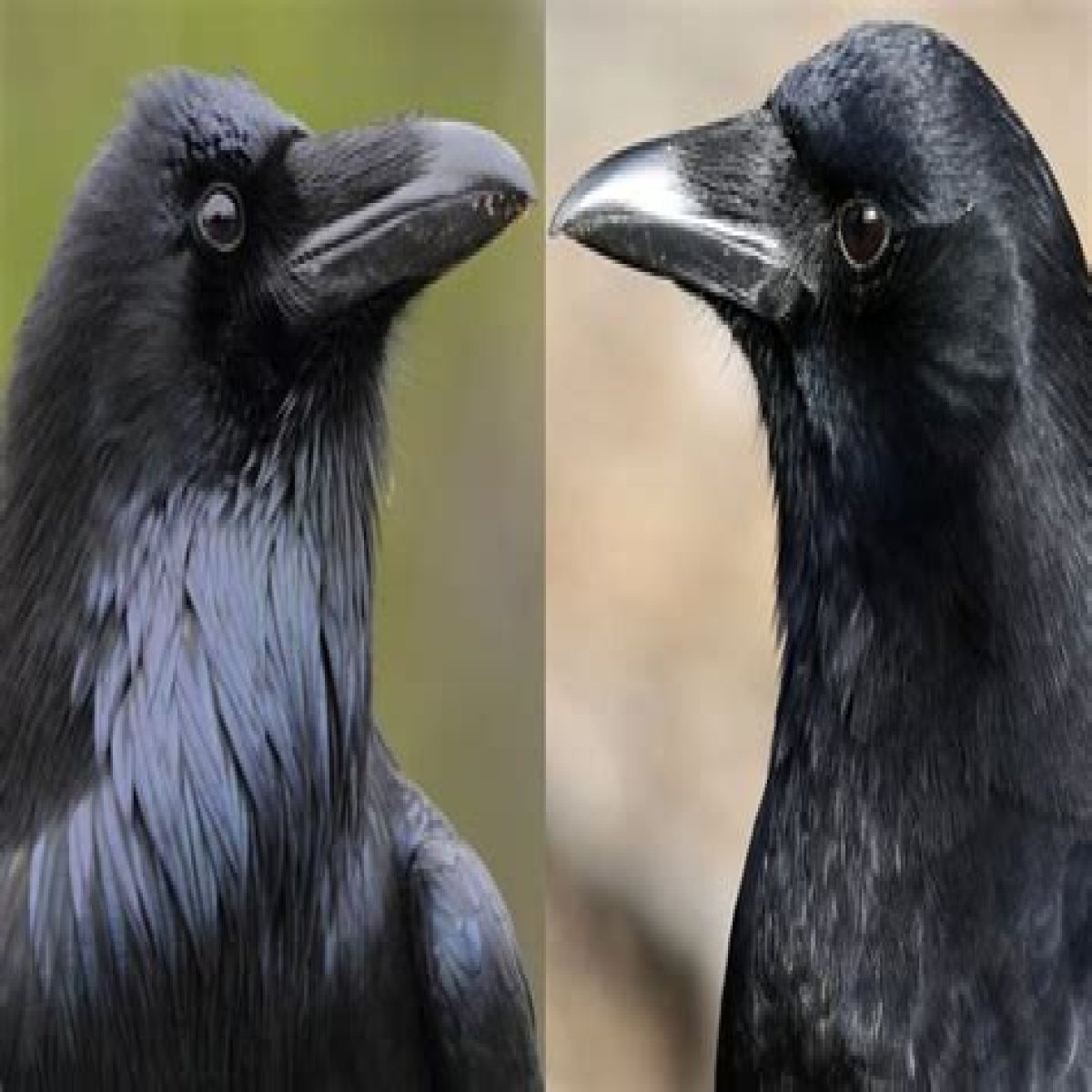The world of avian species is fascinating and complex, with numerous birds showcasing unique traits and characteristics. Among these birds, crows and ravens stand out due to their remarkable intelligence and adaptability. One of the most distinguishing features of these two species is their beaks, which serve as vital tools for foraging and communication. Understanding the differences in the crow vs raven beak can provide insights into their behavior, diet, and ecological roles. Both crows and ravens belong to the Corvidae family, known for their problem-solving abilities and social structures. However, they exhibit some noticeable distinctions, particularly in their physical appearances and the functions their beaks serve. By exploring these differences, we can gain a better appreciation for these incredible creatures and their contributions to the ecosystem.
As we delve deeper into the crow vs raven beak comparison, we will uncover various aspects of their anatomy, diet, and behavior. This exploration will not only enhance our understanding of these birds but will also highlight the importance of their conservation in a rapidly changing world. Whether you're a birdwatching enthusiast or simply curious about nature, this article will provide valuable information about the fascinating lives of crows and ravens.
So, are you ready to embark on a journey to discover the secrets behind the crow vs raven beak? Let’s dive into the intriguing world of these two remarkable avian species and learn what sets them apart!
What Are the Key Differences between Crow and Raven Beaks?
When it comes to identifying crows and ravens, their beaks are one of the most noticeable features to consider. Here are some key differences:
- Size: Ravens possess larger and more robust beaks compared to crows.
- Shape: Raven beaks are slightly curved and more powerful, while crow beaks are straighter and more tapered.
- Color: Both beaks are generally black, but ravens may exhibit a slight sheen due to their larger size.
- Function: Ravens often use their beaks for cracking open tougher food sources, while crows tend to rely on their beaks for more delicate tasks.
How Do Beaks Affect the Feeding Habits of Crows and Ravens?
The beak shape and size play a crucial role in determining the feeding habits of both crows and ravens. Their diet consists of various food sources, including:
- Insects: Both species enjoy a protein-rich diet of insects, which they can easily capture with their agile beaks.
- Fruits and Nuts: Crows are particularly fond of fruits and nuts, while ravens may use their stronger beaks to crack open hard-shelled nuts.
- Scavenging: Both birds are opportunistic feeders and often scavenge for carrion and human food.
What Role Do Beaks Play in Communication Among Crows and Ravens?
Communication is vital for both crows and ravens, and their beaks contribute significantly to their vocalizations. Each species has developed a unique range of calls and sounds that serve various purposes, such as:
- Alarm Calls: Crows and ravens use their vocalizations to warn others of potential threats.
- Social Interaction: Their calls facilitate communication within their social groups, helping to reinforce bonds.
- Mating Rituals: Vocal displays often play a role in attracting mates and establishing territories.
What Can We Learn from the Crow vs Raven Beak Comparison?
The crow vs raven beak comparison unveils much more than just physical differences; it highlights the adaptability and evolutionary traits of these birds. Understanding these differences can provide important insights into their ecological roles and contributions to biodiversity. Moreover, studying their feeding habits and communication methods can help us appreciate the intricate relationships they maintain within their habitats.
How Can We Contribute to the Conservation of Crows and Ravens?
As intelligent and resourceful birds, crows and ravens are vital components of our ecosystems. Here are several ways to support their conservation:
- Habitat Preservation: Protecting natural habitats ensures that these birds have access to food and nesting sites.
- Reducing Pollution: Minimizing waste and pollution helps maintain the health of ecosystems where crows and ravens thrive.
- Education and Awareness: Promoting awareness about the importance of crows and ravens can encourage others to take action for their conservation.
What’s Next for Research on Crows and Ravens?
Ongoing research into the behavior, ecology, and physiology of crows and ravens continues to unveil new discoveries about these remarkable birds. Future studies may focus on:
- Social Structures: Investigating how social dynamics affect their behavior and communication.
- Intelligence: Exploring their problem-solving abilities and how they adapt to changing environments.
- Conservation Efforts: Developing strategies to ensure their survival in urban and rural landscapes.
In conclusion, the crow vs raven beak comparison is not just about physical attributes; it encompasses a broader understanding of their behavior, ecology, and the significant roles they play in our ecosystems. By appreciating these intelligent birds and their unique characteristics, we can foster a deeper connection to the natural world and contribute to their conservation for future generations to cherish.
Celebrating The Essence Of An Unforgettable FriendUnveiling The Enigma: Who Plays Lorraine Warren?The Colorful World Of 2000's Cartoons: A Nostalgic Journey
